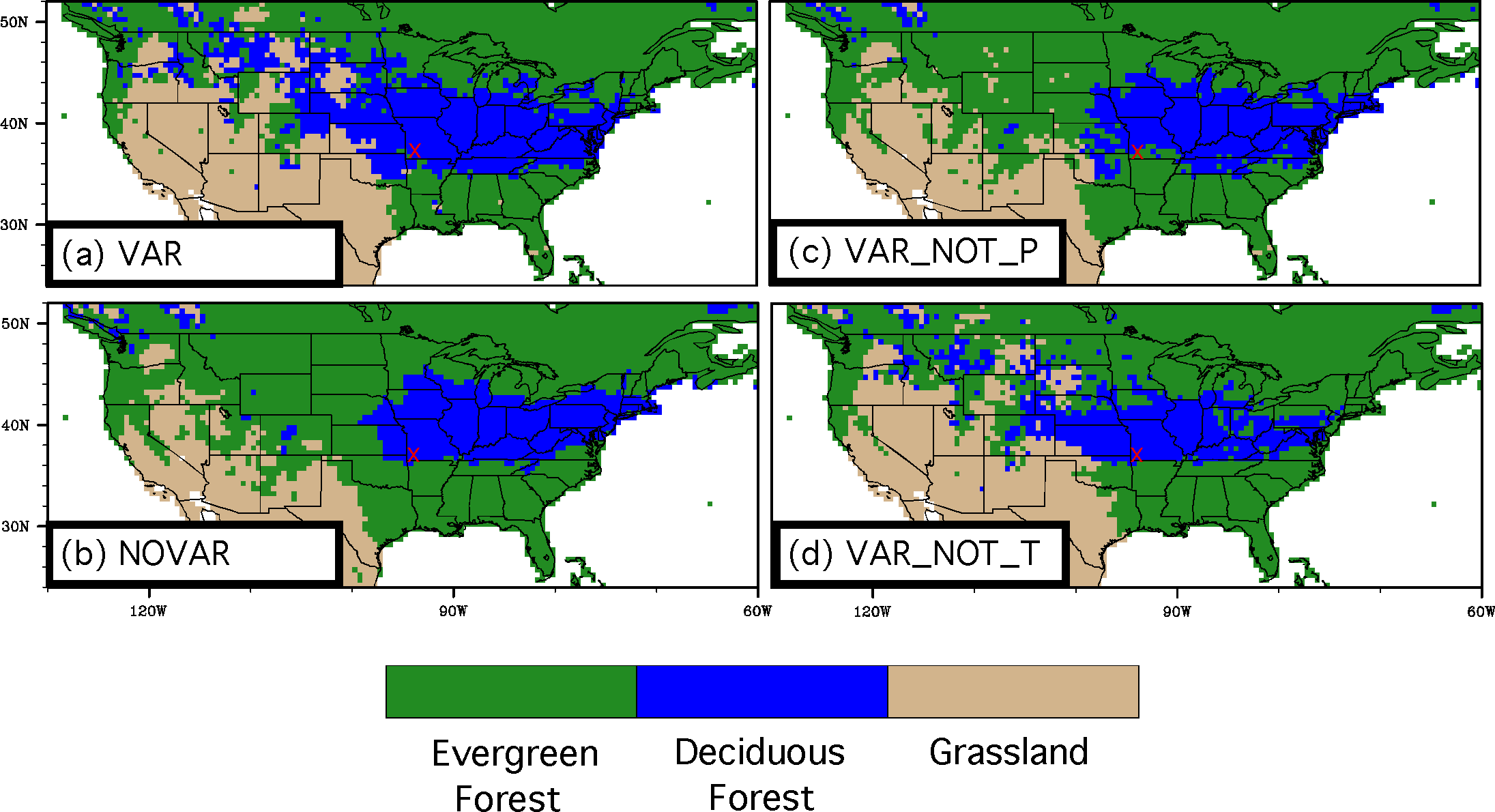
 |
||||
| |
||||
Vegetation's Response to Climate VariabilityCollaborators: None Funding: DOE NICCR Publications: Methods: The Lund-Potsdam-Jena dynamic global vegetation model is used to investigate how interannual climate variability impacts the mean distribution of global vegetation. Experiments in which LPJ is forced with either raw climate data or the mean climatology (no interannual variability in temperature and / or precipitation) are compared to assess the vegetation response. Key finding: Interannual variability in precipitation and temperature results in a reduction in global vegetation cover, with the most distinct changes along ecotones. This climate variability reduces forest cover at the expense of grasses. |
||
 |
Interannual climate variability produces a reduction in total vegetation cover, with a loss of trees (especially evergreen trees) at the expense of grass. The position of the east-west forest-grassland ecotone in central US is strongly affected by interannual precipitation variability, while the position of the north-south deciduous forest-evergreen forest ecotone in the eastern US is affected by interannual temperature variability. | |